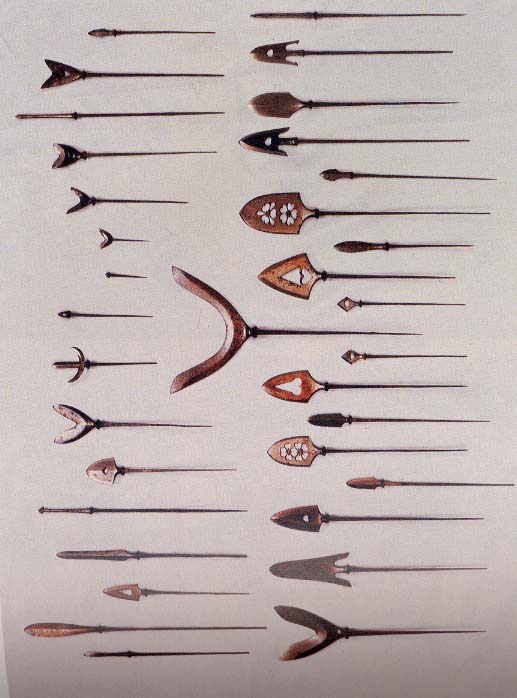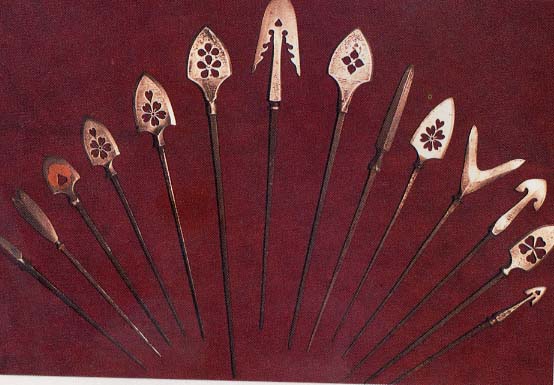
Arrowheads (ya no ne) were made by special smiths who sometimes signed their work. The most decorative were never meant for battle.


The arrows (ya) had bamboo shafts

The japanese bow makers used substances which they had in abundance. That being bamboo and wood. The bow would be deciduous wood with a bamboo shaft fastened on with glue to provide support. But the strongest adhesive available was hide glue which had its drawbacks like weakening when damp as well as not being that strong. To minimize the stress on the glue bows became very long averaging about 2 meters. Bowstrings were plant fiber, usually hemp or ramie coated with wax to give a hard smooth surface.
To draw these huge bows the archer needed to bring it high above his head and then move his hands apart as the bow was brought down.